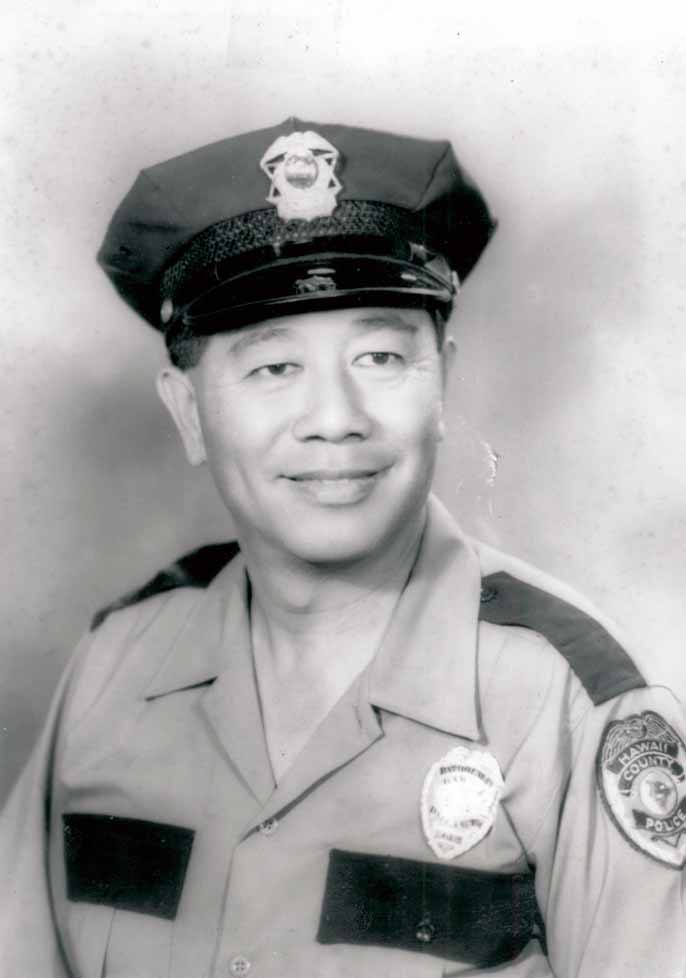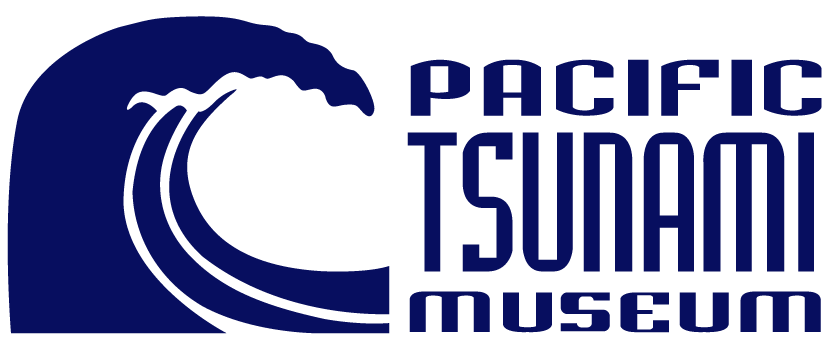Survivor Narratives: 1946
A Tribute to Robert ” Steamy” Chow
Robert “Steamy” Chow died on November 1, 2012 at the age of 90. Through the years he was a policeman, insurance claims adjuster, and manager of the Kress Building in Hilo. He was also a local historian, and the Pacific Tsunami Museum called upon him numerous times to assist in identifying buildings or providing historical facts or clarification. Steamy was featured in the Museum’s 9th Annual Story Festival, one that focused on tsunami first responders. Steamy is being featured here as a tribute to him, one of Hilo’s most beloved citizens.

“April Fool! April Fool!” That’s what 24-year old Hilo police officer Robert “Steamy” Chow replied as he drove to work when a poi shop owner shouted to him that a tsunami was coming. But of course, it was no joke. It was early morning, April 1, 1946 and Hilo was about to be changed forever.
Officer Chow had joined the police force only about three years earlier, when the department was looking for Cantonese-speaking recruits to communicate with the many Chinese plantation workers. When the young policeman saw the bayfront bridge over the Wailuku River awash, he hurried to the station and learned that a wave had already crashed into the town. Officer Chow got orders to patrol Front Street — that’s what Kamehameha Avenue was called at that time. When he got down to Kamehameha Avenue and Waianuenue Avenue, he experienced a moment of confusion. Something was very different. He realized that the railroad depot was completely demolished. He said it looked like a bulldozer had leveled the whole area. When he was on Wailuku Drive and Keawe Street, the next wave hit. It took the railroad bridge, and water went underneath his car. People were running in front of his car. Officer Chow remained on duty for the next 20 hours or more.
In 1960, Officer Chow heard about an earthquake in Chile before he arrived for work at the station that day. He was assigned to drive along the Keaukaha coastline and announce over the loudspeaker that everyone should evacuate to higher ground. The first wave was supposed to hit at 10:30 p.m. But the first two waves came in later than expected and were small. This was an old story. In the 1950s there had been a number of tsunami warnings in Hilo but the waves were small. People became skeptical.
Just minutes after 1 a.m., Officer Chow was driving on Keawe Street when the whole night sky filled with a blinding blue flash and the town became dark. The power plant had exploded when slammed by the powerful third wave. Now the chaos began —- people fleeing, whole city blocks turned to splinters in the dark night. People were dead, injured, needing help. On Mamo Street, the owner of “The Chicken Store”, where you could buy live chickens and local goods, was pinned inside under the collapsed building. A rescue team had to lift the house with a crane to get him out.
Sometime during the long, tortuous night a rumor began spreading that a policeman had died. Other officers and Steamy’s wife wondered if it was him. It wasn’t until the next morning that his wife found him, dove into his arms, relieved to find her husband alive and well, still on duty.
According to Steamy’s wife of 62 years, Steamy lived a full, good life. He loved people and enjoyed working with children.
